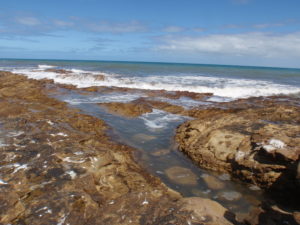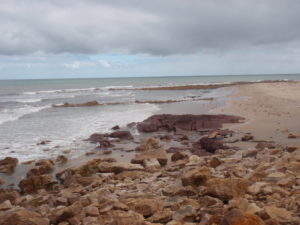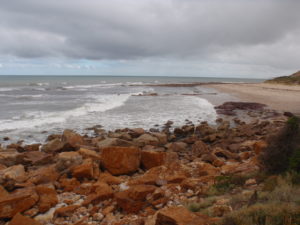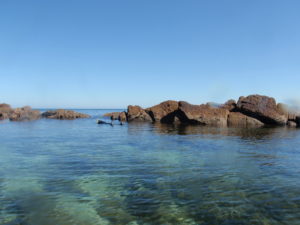Ancient Aboriginal Archaeological Sites Discovered on the Seabed
by Steve Reynolds
(ANOTHER OF STEVE’S SDFSA SCIENCE STORY FOR THE MONTH OF AUGUST)
Thousands of years ago, sea levels were lower than what they are today. Ancient Aboriginal sites have now been found submerged in the waters off Western Australia.
Researchers have uncovered the sites preserved on the seabed in what they describe as being a first discoveries of their kind.

According to The Conversation, some 65,000 years ago, when people first arrived in Australia, the continent was, thanks to sea levels being 80 metres lower than today, even bigger than it is now,. This means that some Aboriginal Australians would have lived in places that are now submerged beneath the waves. Only now has such a site been found.
Researchers comprising of archaeologists, traditional owners, rock art experts, geologists, and specialist divers and pilots, recently completed a four-year mission. According to a Facebook post, “They found two sites in Western Australia’s Dampier Archipelago, featuring stone tools and other evidence of human activity. Dating technology suggests these sites were claimed by the waves some 7,000 years ago, as seas rose after the last ice age.”

Details have been published in a PLOS ONE paper titled “Aboriginal artefacts on the continental shelf reveal ancient drowned cultural landscapes in northwest Australia” by Jonathan Benjamin, Michael O’Leary, Jo McDonald, Chelsea Wiseman, John McCarthy, Emma Beckett, Patrick Morrison, Francis Stankiewicz, Jerem Leach, Jorg Hacker, Paul Baggaley, Katarina Jerbić, (Dr) Madeline Fowler, John Fairweather, Peter Jeffries, Sean Ulm and Geoff Bailey.
Jonathan Benjamin is Associate Professor in Maritime Archaeology, Flinders University and ARC Centre of Excellence for Australian Biodiversity and Heritage, Geoff Bailey is Emeritus Professor of Archaeology, University of York, Jo McDonald is Director, Centre for Rock Art Research + Management, University of Western Australia, Michael O’Leary Senior Lecturer in Climate Geoscience, University of Western Australia and Sean Ulm is Deputy Director, ARC Centre of Excellence for Australian Biodiversity and Heritage, James Cook University. Dr Madeline Fowler is a Senior Research Fellow in Archaeology at the University of Southampton and she is the author of Aboriginal Maritime Landscapes in South Australia.

According to the report’s abstract, “This article reports Australia’s first confirmed ancient underwater archaeological sites from the continental shelf, located off the Murujuga coastline in north-western Australia. Details on two underwater sites are reported: Cape Bruguieres, comprising > 260 recorded lithic artefacts at depths down to −2.4 m below sea level, and Flying Foam Passage where the find spot is associated with a submerged freshwater spring at −14 m. The sites were discovered through a purposeful research strategy designed to identify underwater targets, using an iterative process incorporating a variety of aerial and underwater remote sensing techniques and diver investigation within a predictive framework to map the submerged landscape within a depth range of 0–20 m. ……..”
The team studied navigation charts, geological maps and archaeological sites located on the land over the past four years to narrow down prospective areas before surveying the seabed. They surveyed the seabed using laser scanners mounted on small planes and high-resolution sonar towed behind boats. The team of scientific divers carried out underwater archaeological surveys in the final phase of the research to physically examine, record and sample the seabed. They discovered two underwater archaeological sites in the Dampier Archipelago – Cape Bruguieres and Flying Foam Passage. The site at Cape Bruguieres comprises hundreds of stone artefacts on the seabed at depths down to 2.4m. Traces of human activity associated with a submerged freshwater spring were discovered 14m below sea level in Flying Foam Passage. This included at least one confirmed stone cutting tool made out of locally sourced material.

These sites were found to have been more than 7000 years old before they were submerged by rising seas. The study showed that “archaeological sites exist on the seabed in Australia with items belonging to ancient peoples undisturbed for thousands of years”.

